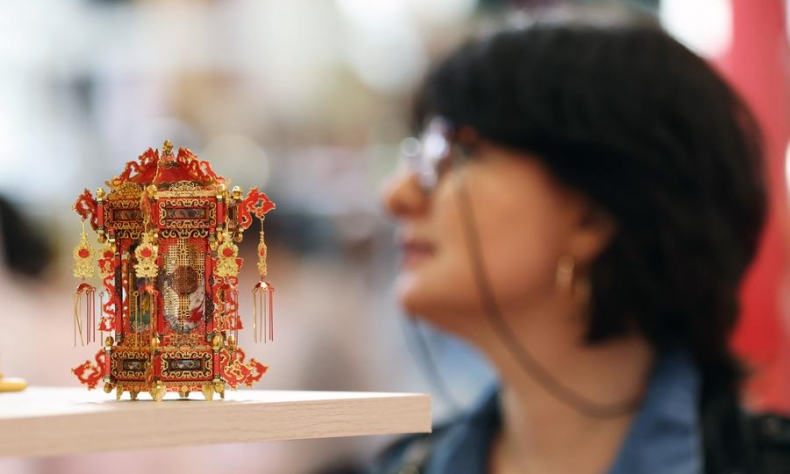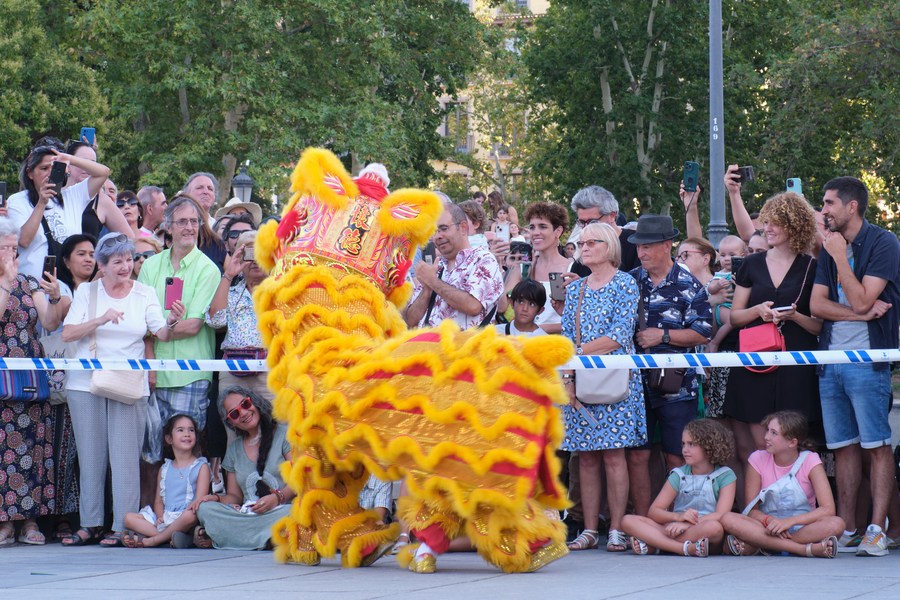People-to-People Exchanges Tighten China-Europe Bond

A dialogue of civilizations between the West and China could be carried out only on equal terms, without any imposition by any civilization or state or bloc of states.
Prior to President Xi Jinping’s Europe visit starting on May 5, the first in five years, a series of people-to-people exchanges were organized in France and Spain by the China International Communications Group (CICG).
The CICG’s think tank, the Academy of Contemporary China and World Studies (ACCWS), hosted the second China-France Forum on Global Governance in Paris on May 2, emphasizing the importance of jointly promoting multilateralism. Also, a delegation led by the CICG and comprising members from various sectors, including the media, arts, and museums, visited Spain, where they attended the inauguration of a Chinese book center at the Centro Riojano in Madrid, one of the main hubs of culture in the capital, and a book donation at the China Culture Center in Madrid, which celebrates its 10th anniversary this year.
During his visit to Madrid in February, Chinese Foreign Minister Wang Yi called it the capital of a major country “with significant international and regional influence” and said Beijing was willing to work with Madrid to take their relations to the forefront of China-Europe ties. Indeed, the EU’s top diplomat Josep Borrell said less than two years ago that “the EU seeks to keep cultural exchanges open with the Chinese people as an essential means to maintain bilateral links and provide a favorable environment for cooperation.”
In tune with this spirit, the CICG delegation’s Spain visit was fruitful. The main event at the Centro Riojano in downtown Madrid on May 3 started with a video introduction by Yu Tao, CICG vice president, after which He Yong, Minister Counselor for Cultural Affairs of the Chinese Embassy, and other dignitaries spoke. Copies of the book Getting to Know China Through Keywords were distributed. This author spoke about the May issue of the China Today magazine published by the CICG, themed “Green Transition, Sustained Growth.” Climate change is one of the most significant areas of cooperation between Spain and China as well as the EU and China.
The following day the delegation donated several books to the China Cultural Center, which houses the largest collection of Chinese books and documents in Madrid, covering areas such as politics, philosophy, law, history, literature, medicine and health. The collection has over 7,000 books and documents.
Culture plays a paramount role in the bilateral relationship. Spain is the cradle of the Western Hemisphere’s second most widely spoken language. Spanish is one of America’s most spoken languages through which the American continent predominantly inherited the European culture and its main institutions via Spain and the Iberian Peninsula. Today these countries have important cultural and material ties with both the EU and China.

A considerable part of Madrid residents were not born in the capital, but in other parts of Spain, Europe, Latin America, Asia and elsewhere in the world, giving it a cosmopolitan environment. Madrid also has one of the most vibrant Chinese communities in Europe.
Yu Tao highlighted that the municipality of Valdemoro, close to downtown Madrid, was the birthplace of one of Europe’s greatest China specialists of all times: Spanish missionary Diego de Pantoja (1571-1618), who lived in China for 21 years, 17 of which were spent in Beijing. He could speak and read Chinese and exchanged wisdom with his Chinese peers in various disciplines, including mathematics, music, geography, linguistics, philosophy, and literature. The Spanish Government and the Cervantes Institute, as well as the Chinese Embassy and the Confucius Institute in Spain recently paid tribute to him, both on the occasion of his birth and death.
More than one guest at the main ceremony mentioned that Diego de Pantoja collaborated in China with other classic European sinologists such as the Italian priest Matteo Ricci. Southern European specialists understood even then that a dialogue of civilizations between the West and China could be carried out only on equal terms, without any imposition by any civilization or state or bloc of states.
The CICG delegation’s visit to Spain also served as a reminder of another cultural affinity between Madrid and Beijing. The ceremonies in which the CICG participated took place in the center of the capital, adjacent to the urban design of Madrid’s Landscape of Arts and Sciences, which has been called “the Landscape of Light.” It was declared a UNESCO World Heritage Site in a UNESCO meeting in the Chinese city of Fuzhou in 2021.
This year China expects UNESCO to recognize the globally admired 700-year-old Central Axis in Beijing, the 7.8 km stretch on which the Chinese capital’s ancient monuments of power are located, and include it in the World Heritage List. Though several attractions along the axis have been included on the list in recent decades, experts say that it is still important to include the axis as a whole, as the concept not only still influences modern Beijing’s urban planning but also reflects the unique philosophies behind ancient Chinese architecture and culture. This is widely recognized by Spanish architects.
The CICG visit to Spain was the organization’s second one in less than six months. Last November, headed by CICG President Du Zhanyuan, a delegation held dynamic roundtables with European scholars and experts focusing on the economy, culture and sustainable development in the 21st century respectively in Bologna (Italy), Madrid (Spain), and Paris (France).
Augusto Soto is director of the Spain-based Dialogue with China Project.
 Facebook
Facebook
 Twitter
Twitter
 Linkedin
Linkedin
 Google +
Google +










